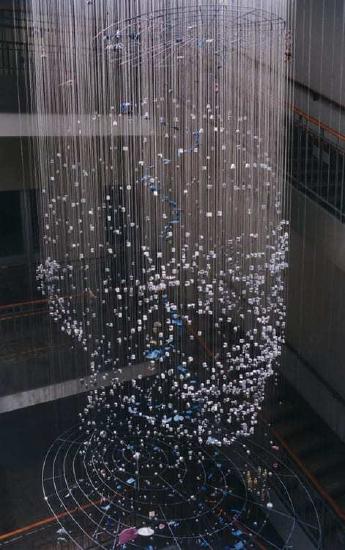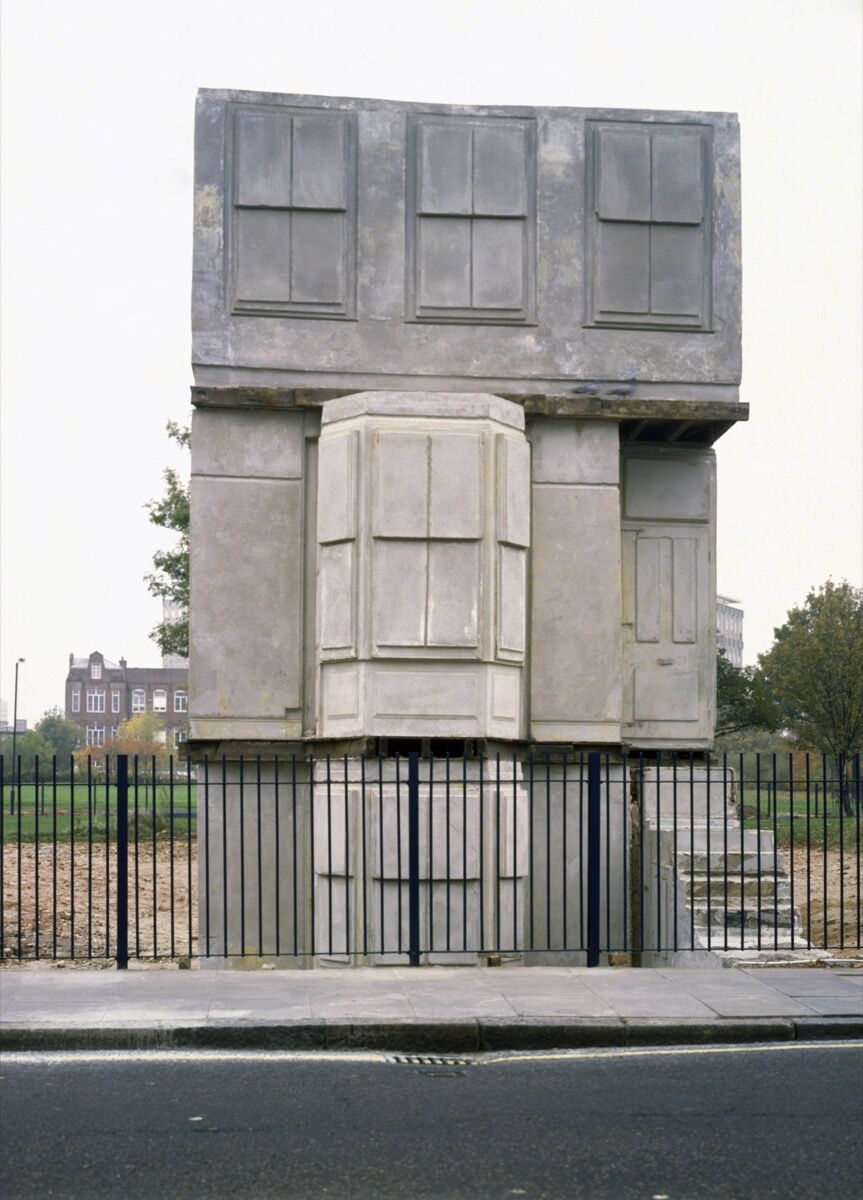2.6: Elements of Art- Mass and Volume
- Page ID
- 156852
\( \newcommand{\vecs}[1]{\overset { \scriptstyle \rightharpoonup} {\mathbf{#1}} } \) \( \newcommand{\vecd}[1]{\overset{-\!-\!\rightharpoonup}{\vphantom{a}\smash {#1}}} \)\(\newcommand{\id}{\mathrm{id}}\) \( \newcommand{\Span}{\mathrm{span}}\) \( \newcommand{\kernel}{\mathrm{null}\,}\) \( \newcommand{\range}{\mathrm{range}\,}\) \( \newcommand{\RealPart}{\mathrm{Re}}\) \( \newcommand{\ImaginaryPart}{\mathrm{Im}}\) \( \newcommand{\Argument}{\mathrm{Arg}}\) \( \newcommand{\norm}[1]{\| #1 \|}\) \( \newcommand{\inner}[2]{\langle #1, #2 \rangle}\) \( \newcommand{\Span}{\mathrm{span}}\) \(\newcommand{\id}{\mathrm{id}}\) \( \newcommand{\Span}{\mathrm{span}}\) \( \newcommand{\kernel}{\mathrm{null}\,}\) \( \newcommand{\range}{\mathrm{range}\,}\) \( \newcommand{\RealPart}{\mathrm{Re}}\) \( \newcommand{\ImaginaryPart}{\mathrm{Im}}\) \( \newcommand{\Argument}{\mathrm{Arg}}\) \( \newcommand{\norm}[1]{\| #1 \|}\) \( \newcommand{\inner}[2]{\langle #1, #2 \rangle}\) \( \newcommand{\Span}{\mathrm{span}}\)\(\newcommand{\AA}{\unicode[.8,0]{x212B}}\)
Overview
- Three-dimensional works of art: Have height, width, and depth
- Possess three visual elements: form, volume, and mass.
Form
- A two-dimensional object is a shape; a three-dimensional object is called a form.
- There are two types of form; geometric and organic
- Geometric Forms are regular forms that are readily expressible in words or mathematics such as cubes, spheres, cylinders, cones, and pyramids are simple examples.
- David Smith combines geometric forms in angular relationships. His sculptures are composed of simple geometric shapes and relate, as the name suggests, to Cubist painting and sculpture.
- In 'Cubi XIX' the forms on the cross beam are arranged rather like a still life, though elevated by the vertical beam. Smith intended the 'Cubi' works to be shown outside so that the burnishing of the stainless steel would reflect changes in lighting conditions. The geometric forms were softened by this response to the environment as Smith anticipated in a note on a sketch: 'polished - like I feel if I make square clouds'. Gallery label, September 2004. 9
David Smith, Cubi XIX, 1964. Stainless steel, 113¼ × 21⅝ × 20⅝". Tate Gallery, London, England © Estate of David Smith /VAGA, New York/DACS, London 2020
- Organic Form comes from the natural world. They are usually irregular and unpredictable. The human figure is considered an organic form.
- In Roettgen Pietà, the artist carves the bodies of Mary and Jesus as irregular, awkward, and distorted, expressing the agony of death and grief 1
Roettgen Pietà (Vesperbild), Middle Rhine region, c. 1330. Wood, height 34½". Rheinisches Landesmuseum, Bonn, Germany.
- Forms have two basic attributes; Volume: the amount of space a form occupies and Mass: the volume is solid and occupies space
- Volume is the amount of space occupied by an object. When artists enclose a space with materials that are not completely solid, they create an open volume.
- In Helmick's Ghostwriter, carefully suspended pieces of metal create an open volume and a large human head when seen as a whole. 1
- Over 3,000 varied cast metal forms are precisely located on 900 descending cables. Each element is a sculpture in itself; en masse they articulate a large head within an abstract spiral form.
- Visit this site to have more information; https://helmicksculpture.com/work/ghost-writer
 .
. 
Ralph Helmick and Stuart Schechter, Ghostwriter, 1994. Cast metal/stainless cable, 36 × 8 × 10'. Evanston Public Library, Illinois. “Ghostwriter” Ralph Helmick and Stuart Schechter.
- Mass is the quantity of matter, often meaning its weight. Mass suggests that something is solid and occupies space.1
- Whiteread's House suggests great weight and solidity. She filled the interior of a house with concrete before demolishing exterior walls.
- Empty volume of the interior is turned into a memorial of the lives of the people who used to live in it
- The work was a concrete cast of the inside of the entire three-story house, basement, ground floor and first floor, including stairs and bay windows, but not the roof space. After Whiteread took possession of the building in August 1993, new foundations were created to support the new concrete.
- Internal structures such as sinks and cupboards were removed, holes in the walls filled and the windows covered, to prepare a continuous internal surface that could be sprayed with a debonding agent, then a 5 centimetres (2.0 in) layer of concrete coloured light grey, and then a final 25 centimetres (9.8 in) layer of concrete reinforced with steel mesh. The builders left through a hole in the roof which was then sealed, and the external brick-built structure was removed. 2

Rachel Whiteread, House, at 193 Grove Road, London E3, 1993. © Rachel Whiteread. Photo by Sue Omerod. Courtesy of the artist and Gagosian.
Click to see more information about this work.
- A form is a three-dimensional geometrical figure (i.e.: sphere, cube, cylinder, cone, etc.), as opposed to a shape, which is two-dimensional, or flat.
- A mass is a three-dimensional form that occupies a volume of space.
- Shape, volume, and space, whether actual or implied, are the basis of the perception of reality.
Sources
- Debra J. DeWitte, Ralph M. Larmann, and M. Kathryn Shields. Gateways to Art: Understanding the Visual Arts, Third Edition. 2018
- Smith, Roberta (30 November 1993). "The Best of Sculptors, the Worst of Sculptors". The New York Times. Retrieved 16 April 2016.
- Ralph Helmick, Ghostwriter. https://helmicksculpture.com/work/ghost-writer


